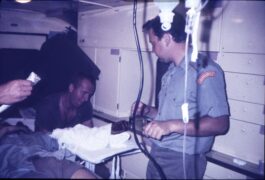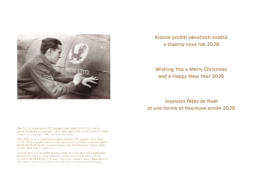
05 German Uniform of 1st Ski Division Soldier, Dukla, 1944
Fotogalerie
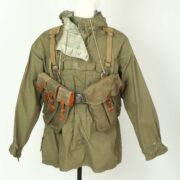
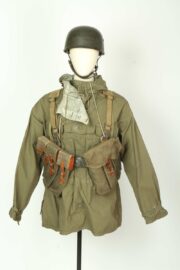
The elite of the German Army during World War II included, among others, the Gebirgsjäger mountain troops. Due to their activity in a specific environment, they were equipped with a number of special uniform components. The German Army distinguished several types of protective overcoats for mountain units. The first type that was introduced was the three-quarter-length coat with a double-breasted fastening (Windjacke), then the white windbreaker worn over the head (Windbluse), and finally a two-piece reversible garment (Anorakanzug). The last one consisted of an anorak worn over the head and wide trousers. On later examples, the size is marked with Roman numerals and the designation of M.43.
The anorak is made of fine cotton fabric, printed on one side in grey. There are three large pockets on the chest covered with a flap and a pair of pockets on the back. The sleeves can be pulled down with buckled straps, and a belt was used to fasten the jacket to prevent it from rolling up. The anorak also features a sewn-in hood with lacing and a flap to prevent wind penetration. All buttons are made of hardened paper. The whole ensemble was reversible – one side was grey, the other was white, to be used according to the environment. After the end of WWI, the Czechoslovak Army acquired some of the stock and used the clothes for winter training, such as with the 71st Infantry Battalion of the “Czechoslovak Paratroopers”.
Aktuálně
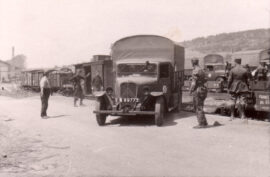
Oceňovaní spojenci - Pozemní útvary československé branné moci v bitvě o Francii očima francouzského velení

Vánoce a přelom roku v zahraniční misi na Slovensku v roce 2022

Prosinec 1944 – oficiální vydání prvních poštovních známek osvobozeného Československa
